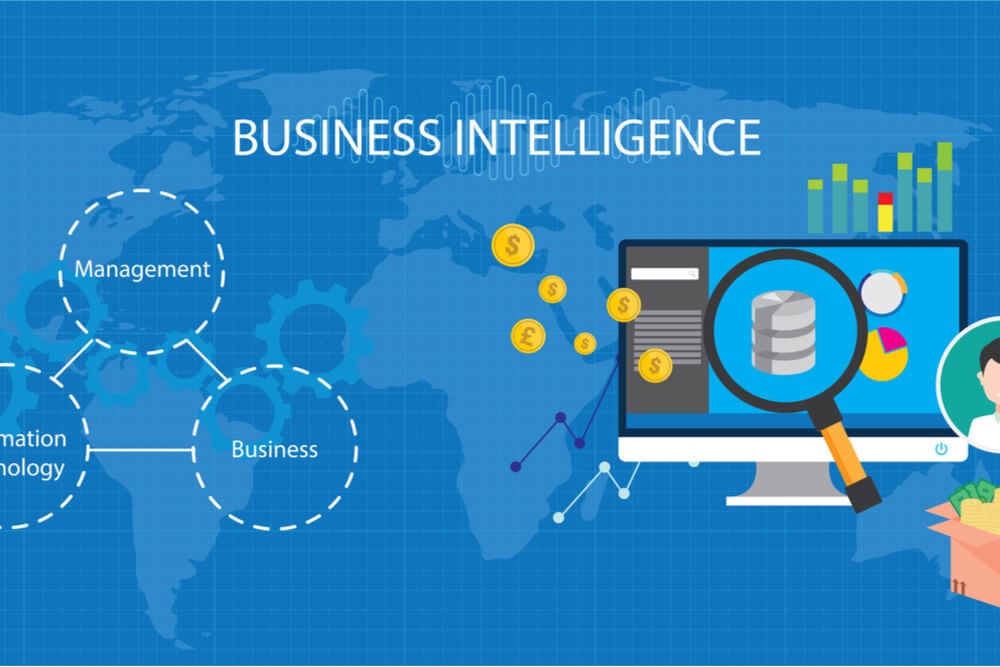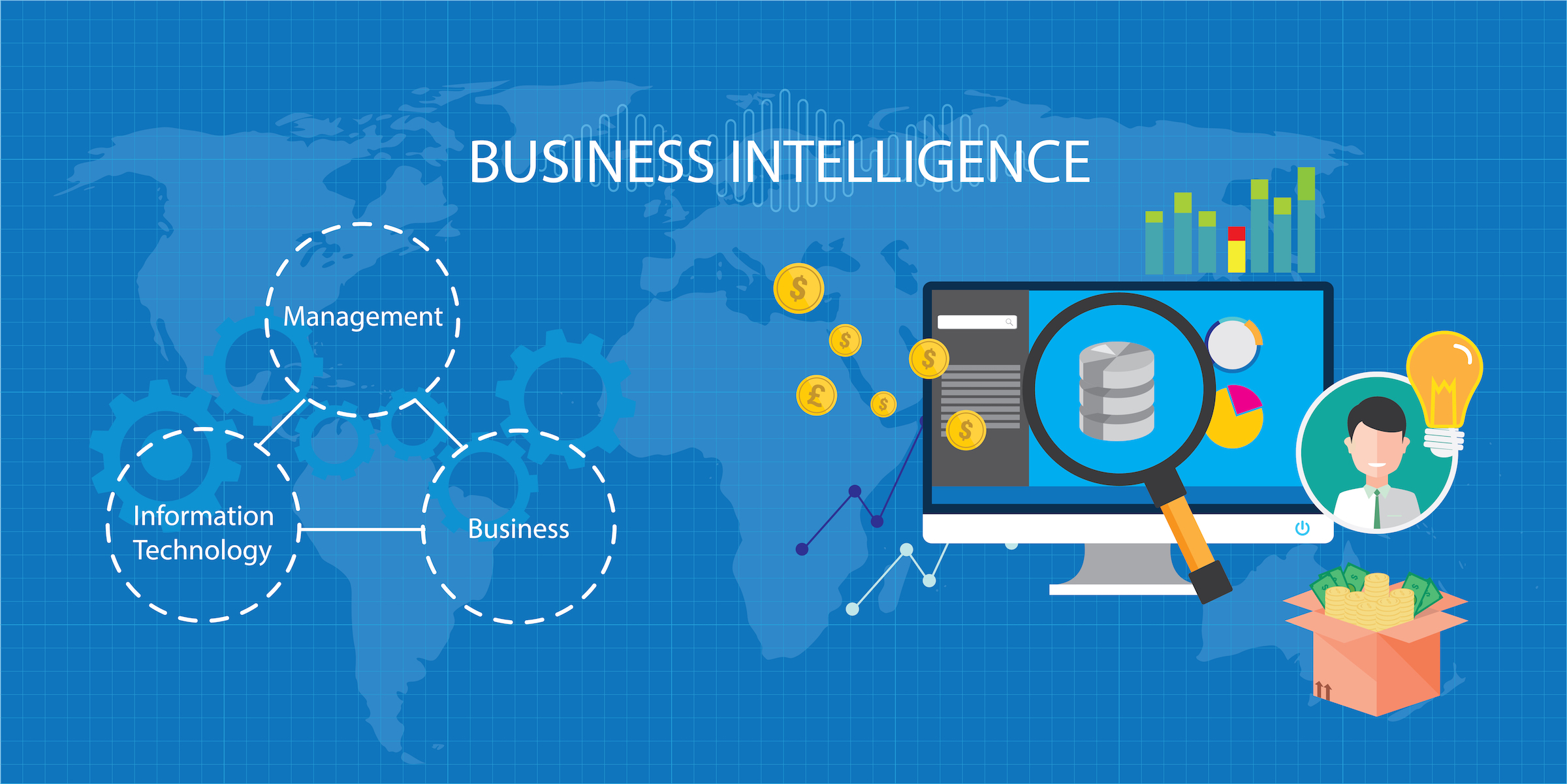Business intelligence (BI) is no longer a buzzword; it’s a fundamental necessity for businesses of all sizes to thrive in today’s competitive landscape. It’s about transforming raw data into actionable insights, enabling informed decision-making across the entire organization. Business intelligence is the process of collecting, analyzing, and interpreting data to gain a competitive advantage. It’s about understanding why things are happening, not just what is happening. This article will delve into the core strategies, tools, and best practices for implementing a robust business intelligence program, ultimately empowering your organization to achieve its strategic goals. Let’s explore how to unlock the power of data and drive real results.

Understanding the Core of Business Intelligence

The initial step towards effective business intelligence is understanding the different types of data and the various ways it can be utilized. Data comes in many forms – sales figures, customer demographics, marketing campaign performance, operational metrics, and more. Simply collecting data isn’t enough; it needs to be organized, cleaned, and analyzed to reveal meaningful patterns. Different types of data require different analytical approaches. For example, descriptive analytics focus on summarizing past data, while diagnostic analytics investigates why something happened. Predictive analytics uses statistical models to forecast future trends, and prescriptive analytics recommends actions based on those predictions. Choosing the right type of analytics depends entirely on the business question you’re trying to answer. Without a clear understanding of these different types, you risk collecting valuable data without extracting meaningful insights. Investing in proper data governance is crucial for ensuring data quality and reliability – a foundation for any successful BI initiative.

Data Sources and Collection
A significant challenge in implementing a business intelligence program is securing access to the right data. Organizations often rely on a patchwork of data sources, including internal systems (CRM, ERP, marketing automation platforms), external data providers (market research firms, social media analytics), and even publicly available data. Effective data collection requires a strategic approach. This often involves establishing clear data pipelines, automating data extraction, and implementing data quality checks. Consider using ETL (Extract, Transform, Load) tools to streamline the process of moving data from various sources into a centralized repository. Furthermore, ensuring data privacy and security is paramount. Compliance with regulations like GDPR and CCPA is essential, and organizations must implement robust security measures to protect sensitive data. A well-defined data catalog, which provides a central repository of data definitions and metadata, is also invaluable for data discovery and understanding.

Key Business Intelligence Strategies
Several key strategies are employed to effectively implement and utilize business intelligence. One of the most popular approaches is the use of dashboards – visual representations of key performance indicators (KPIs). Dashboards provide a quick and easy way to monitor progress towards business goals, allowing stakeholders to quickly identify trends and potential problems. However, dashboards are only effective if they are regularly updated and tailored to the specific needs of the users. Choosing the right dashboarding tool is also critical. There are numerous options available, ranging from simple spreadsheet-based tools to sophisticated business intelligence platforms. Consider factors like ease of use, data connectivity, and reporting capabilities when selecting a dashboarding solution. Another crucial strategy is the implementation of data visualization techniques – charts, graphs, and maps – to make complex data more accessible and understandable. Visualizations can reveal patterns and trends that might be hidden in raw data. Effective data visualization requires careful consideration of the data being presented and the intended audience.

Reporting and Analysis Techniques
Beyond dashboards, a range of reporting and analysis techniques are employed to extract deeper insights from data. SQL (Structured Query Language) is a fundamental language for querying and manipulating data stored in relational databases. Business analysts use SQL to extract data, transform it, and load it into reporting tools. Reporting tools, such as Tableau, Power BI, and Qlik Sense, provide a user-friendly interface for creating interactive reports and visualizations. These tools allow users to explore data, drill down into details, and identify key trends. Statistical analysis techniques, such as regression analysis and hypothesis testing, can be used to test hypotheses and draw conclusions about the relationships between variables. For example, a regression analysis can be used to determine the impact of marketing spend on sales. Data mining techniques can be used to discover hidden patterns and relationships in large datasets. The choice of analytical technique depends on the specific business question being addressed.

Data Governance and Quality
As mentioned earlier, data quality is paramount for successful business intelligence. Poor data quality can lead to inaccurate insights and flawed decision-making. Data governance encompasses policies and procedures for managing data throughout its lifecycle – from collection to storage to usage. This includes defining data standards, establishing data ownership, and implementing data quality controls. Data quality tools can be used to cleanse and standardize data, ensuring that it is accurate, complete, and consistent. Implementing data lineage – tracking the origin and transformations of data – is also crucial for understanding data quality issues and identifying potential problems. Furthermore, fostering a data-driven culture within the organization is essential – encouraging employees to use data to inform their decisions and to challenge assumptions. This requires training, communication, and a commitment to data literacy.

The Role of Artificial Intelligence (AI) in Business Intelligence
The integration of Artificial Intelligence (AI) is rapidly transforming business intelligence. AI-powered tools are automating many of the tasks traditionally performed by business analysts, such as data cleaning, data mining, and report generation. Machine learning algorithms can be used to identify patterns and trends in data that would be difficult for humans to detect. For example, AI can be used to predict customer churn, identify fraudulent transactions, and optimize pricing strategies. Natural Language Processing (NLP) allows businesses to extract insights from unstructured data, such as customer reviews and social media posts. AI-powered chatbots can also be used to provide customer support and answer questions about business intelligence initiatives. However, it’s important to remember that AI is a tool, and its effectiveness depends on the quality of the data and the expertise of the users. A human-in-the-loop approach, where business analysts oversee and validate AI-driven insights, is often the most effective strategy.

Measuring the Success of Business Intelligence
The success of a business intelligence program should be measured not just by the number of reports generated, but by the impact on business outcomes. Key performance indicators (KPIs) should be tracked to assess the effectiveness of the program. Examples of KPIs include: increased sales revenue, improved customer satisfaction, reduced operational costs, and enhanced profitability. Regularly monitoring these KPIs will provide valuable insights into the program’s performance and identify areas for improvement. Furthermore, conducting user satisfaction surveys can help gauge the usefulness of the dashboards and reports. Ultimately, the goal of business intelligence is to provide actionable insights that drive business value.

Conclusion
Business intelligence is no longer a luxury; it’s a strategic imperative. By understanding the core principles, implementing effective strategies, leveraging the right tools, and embracing AI, organizations can unlock the power of their data and achieve significant competitive advantages. The ability to transform raw data into meaningful insights is a key differentiator in today’s dynamic business environment. Investing in a robust business intelligence program is an investment in the future of your organization. Remember to consistently evaluate your strategy, adapt to changing business needs, and prioritize data quality. As technology continues to evolve, so too will the capabilities of business intelligence, ensuring that your organization remains at the forefront of data-driven decision-making. Focusing on continuous improvement and a data-centric culture will be crucial for sustained success.
